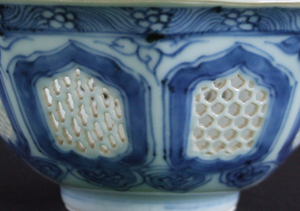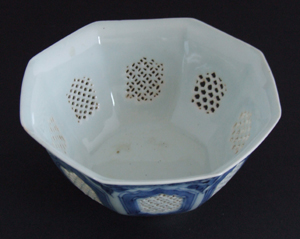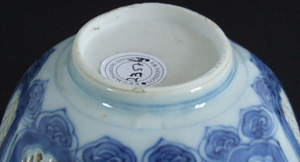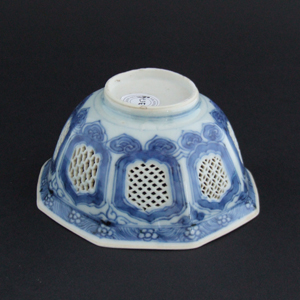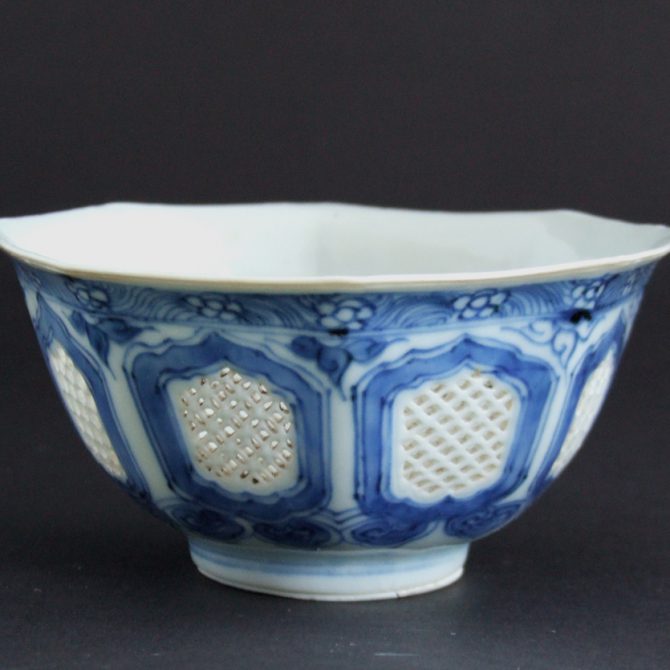
CHONGZHEN 1628 – 1644 Transitional Porcelain
A Transitional Blue and White Porcelain Bowl, Late Ming, Chongzhen Period 1628-1644. The Octagonal Form has Steep Sides with Pierced Panels of Different Designs Including `Cash` and Wave Motifs. Each Panel is Framed in Blue and White, the Border Above is of Prunus Blossoms Among Moving Water. The Lower Border is of `Ruyi-Heads`. The Rim has Been Left in Biscuit Porcelain (Unglazed).
SOLD
- Condition
- In perfect condition.
- Size
- Diameter : 11.9 cm (4 3/4 inches)
- Provenance
- N/A
- Stock number
- 23574
- References
- This bowl appears not to be from a shipwreck but very similar blue and white Transitional bowls from the `Hatcher Junk` of c.1643 are illustrated in Fine And Important Late Ming And Transitional Porcelain, Recently Recovered from an Asian Vessel in the South China Sea. Property of Captain Michael Hatcher. Christie`s Amsterdam 14th March 1984. Page 38, lots 197 and 199
Information
Linglong / Reticulated Porcelain :
The present piece is an example of what can be referred to as `reticulated` porcelain, reticulated meaning having the form or appearance of a net, it was used as early the beginning of the 18th Century by the famous Père Francois Xavier d`Entrecolles (1664-1741) to describe this type of work on porcelain. Another popular term for this type of pierced or cut decoration is `Devils Work` or Guigong. However the Chinese term Linglong is gradually replacing the previous terms, helped by the publication of Jorge Welsh`s book `Linglong` (Jorge Welsh, London, 2004.ISBN 972-99045-2-9). There does not seem to be any difference in the use of terms between the free standing pierced porcelain or that supported by an inner wall, nor a distinction made between the most refined work or the type with larger cut-out sections of porcelain.
Ruyi-Head and Lingzhi Fungus Designs:
The Ruyi scepter has been an important symbol in China since at least Western Han times, its origins are still unclear, it might be Chinese but it could equally well be a Buddhist import. The Taoists believe the Ruyi evolved from the Lingzhi fungus, their symbol of immortality. Indeed the Ruyi-Head, that is the top of the scepter which curves back over the main body is often modelled as a Lingzhi fungus cloud form. Lingzhi is the immorality fungus and Ruyi means "may you have".
